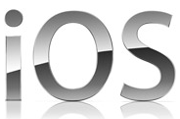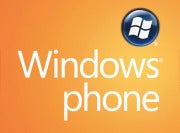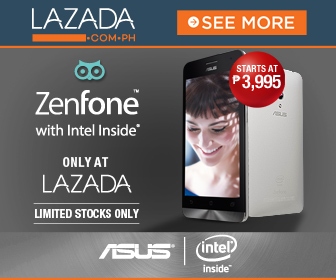Shopping for a new smartphone is tough: With so many phones out there, finding the best one for your work life and
your personal life can be headache-inducing. This guide highlights
business features among the different operating systems, explains the
best specs for business, and offers advice on the apps you should
download once you purchase your smartphone.
Also, be sure to check out our consumer cell phone buying guide, which walks you through the general features and specs to look for and test while shopping for a phone.
Operating System
Google's Android (found on multiple devices), Apple's iOS (found only on iPhone models), RIM's BlackBerry OS (found on BlackBerrys of various designs), and Microsoft’s Windows Phone 7 all can be ideal for business, but each OS offers different features and advantages. Familiarize yourself with all of the platforms before settling on one. Prior to your shopping trip, ask your IT person whether your mail system is compatible only with certain clients, or if he or she recommends one mobile platform over another for your work email.Android
Current Android phones run either Android 2.3 (Gingerbread) or Android 4.0 (Ice Cream Sandwich). Many Gingerbread phones will receive an upgrade to Ice Cream Sandwich eventually, though, and ICS adds a slew of business-friendly features to the Android platform.

To help you organize your IMAP and Exchange accounts, the Email app in ICS supports nested mail subfolders. The Email app also supports Exchange ActiveSync v14.
iOS
Traditionally, business users have not favored Apple’s iOS. However, in its latest iteration, iOS 5, the platform has expanded its business features.

In the iOS 5 mail app, you can add rich formatting, such as bold and italic text, to messages, as well as indent text. Mail now has a built-in dictionary, too. Another highlight is the iMessage app, which lets you send messages to any iOS device, regardless of whether it has SMS support.
Windows Phone


The incredibly useful BlackBerry Protect lets you back up your data and manage multiple devices. If your BlackBerry is stolen or lost, you can remotely locate it, wipe it, lock it, or change the volume of the ringer. Like Balance, this service is completely free for BlackBerry 7 OS users.
Last but not least, the premium version of Documents to Go is available for free on all BlackBerry 7 OS phones. Users can now compose, edit, and view Word, Excel, and PowerPoint files. This addition is just one more excellent business feature that BlackBerry OS offers its enterprise customers.
The Specs That Matter for Business
The particular phone features described below are crucial to business users, but if you plan on using the same phone for your everyday life, check out our general cell phone buying guide too.4G
Following a lot of buzz, the next generation of wireless networks, 4G, has arrived in the form of two main technologies: WiMax and Long Term Evolution. The main advantage of 4G lies in its faster download and upload speeds, which significantly improve streaming video and Web browsing, and allow features such as videoconferencing.

HDMI/MHL
An HDMI port will let you hook up your smartphone to an HDTV, which is ideal for giving presentations on the go. Some phones have MHL ports rather than HDMI. The MHL specification (Mobile High Definition Link) is a 1080p HD video and digital audio interface for connecting smartphones and other portable devices (tablets, cameras, and the like) to HDTVs. So what's the big deal? It simultaneously provides power to your phone--something that HDMI cables don't do.
Front-Facing Video Camera
If you plan on making video calls or participating in videoconferences from your phone, make sure that it has a front-facing video camera. Front-facing cameras range from VGA video-only cameras to 2-megapixel cameras that can take still images as well. Video quality, however, won’t be as dependent on the actual camera as it will be on the app or network you are using to make the call.
Built-In Storage

If you simply can’t adjust to a touchscreen keyboard, consider a phone with an actual QWERTY keyboard. Smartphones with physical QWERTY keyboards are an endangered species nowadays, but you can still find a few out there. You might opt for a candy-bar model, such as the BlackBerry Bold 9790 or the Motorola XPRT, or a phone with a slide-out keyboard, like the Samsung Captivate Glide.
sources; http://www.pcworld.com/article/253326/how_to_buy_a_smartphone_for_your_business.html


![OPPO Joy [R1001] - White OPPO Joy [R1001] - White](http://www.bhinneka.com/Data/image_product/OPPO-Joy-[R1001]-White-SKU01214626_0-20140902134835.jpg)

![TP-LINK N750 Wireless Dual Band Gigabit Router [TL-WDR4300] TP-LINK N750 Wireless Dual Band Gigabit Router [TL-WDR4300]](http://www.bhinneka.com/Data/image_product/TP-LINK-N750-Wireless-Dual-Band-Gigabit-Router-[TL-WDR4300]-SKU00712872_0-20140417101429.jpg)

![ASUS Wireless-N Router [RT-N12HP] ASUS Wireless-N Router [RT-N12HP]](http://www.bhinneka.com/Data/image_product/ASUS-Wireless-N-Router-[RT-N12HP]-SKU00113615_0.jpg)
![ASUS Fonepad 7 [FE170CG] - Mica Black ASUS Fonepad 7 [FE170CG] - Mica Black](http://www.bhinneka.com/Data/image_product/ASUS-Fonepad-7-[FE170CG]-Mica-Black-SKU00614737_0-20140506151255.jpg)
















![ASUS Wireless-N Router [RT-N10U B] ASUS Wireless-N Router [RT-N10U B]](http://www.bhinneka.com/Data/thumbnail_product/ASUS-Wireless-N-Router-[RT-N10U-B]-SKU01112255-20140417090227.jpg)



![SAMSUNG Galaxy Camera 2 [GC200] - White SAMSUNG Galaxy Camera 2 [GC200] - White](http://www.bhinneka.com/Data/thumbnail_product/SAMSUNG-Galaxy-Camera-GC200-White-SKU00314420.jpg)
![SANDISK Extreme II Desktop [SDSSDXP-120G-G26] SANDISK Extreme II Desktop [SDSSDXP-120G-G26]](http://www.bhinneka.com/Data/thumbnail_product/SANDISK-Extreme-II-Desktop-[SDSSDXP-120G-G26]-SKU01213130.jpg)
![CORSAIR Memory Notebook 8GB DDR3 PC-10600 [CMSO8GX3M1A1333C9] CORSAIR Memory Notebook 8GB DDR3 PC-10600 [CMSO8GX3M1A1333C9]](http://www.bhinneka.com/Data/thumbnail_product/CORSAIR-Memory-Notebook-8GB-DDR3-PC-10600-[CMSO8GX3M1A1333C9]-SKU00911963-20140422104325.jpg)

![TP-LINK Outdoor Wireless Access Point [TL-WA7210N] TP-LINK Outdoor Wireless Access Point [TL-WA7210N]](http://www.bhinneka.com/Data/thumbnail_product/TP-LINK-Outdoor-Wireless-Access-Point-[TL-WA7210N]-SKU01413236-20140513114348.jpg)


0 komentar:
Posting Komentar